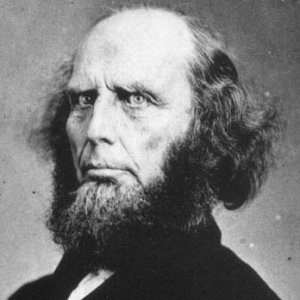I’m still trying to start out the new year with a fresh(-ish) slate by sorting through my bookmarks from 2021. These are old, but not out of date.
• I’ve repeatedly mentioned my fondness for Donald W. Dayton’s inspirational little history book, Discovering an Evangelical Heritage. It’s a terrific collection of stories of exceptional heroism involving white evangelical Christians who courageously fought for justice.
Or, rather, it’s a collection of stories about exceptionally heroic white evangelical Christians who fought for justice so courageously that they were, because of that, forced to depart from white evangelical Christianity. As I wrote here, Dayton’s book chronicles:
… the honorable history of many such exceptional Christian activists — the few white evangelical voices of their time who were not wrong about slavery. Many of those stories are inspiring, but I don’t think they add up to “an evangelical heritage” as much as to a frustrating account of a road not taken, an alternate path repeatedly offered to and rejected by the majority of 19th-century white evangelicals. Many of the abolitionists Dayton profiles began as devout evangelicals but — with equal parts jumping and pushing — wound up far outside the evangelical fold, as Quakers or theological liberals or various sorts of vaguely Emersonian post-Christians.
Yes, the story of the “Lane rebellion” and the founding of Oberlin College by a bunch of abolitionist evangelicals is a terrific slice of history, but that history also has to include the way Oberlin was quickly ostracized and “farewelled” out of fellowship with the rest of white evangelicalism, pushed off from its origins to become, well, Oberlin College. The white evangelical abolitionist Jonathan Blanchard was also instrumental in the founding of what is now a well-regarded midwestern school, but today Wheaton College remains staunchly evangelical in all the ways that Oberlin is not precisely because it sloughed off every trace of Blanchardism except for his belief in temperance.
My point being that when our attempt to say #NotAllWhiteEvangelicals were wrong about slavery leads us to compiling a list of “evangelicals” that has to include people like Theodore Dwight Weld and Angelina Grimké, I think the strain of that exercise begins to show.
Charles Turner Torrey is mentioned only in passing in Dayton’s book but, as Erik Loomis’ visit to his American grave illustrates, he was worthy of his own chapter there. Torrey was converted and transformed during the revivals of the Second Great Awakening and his faith drove him to become a ferocious abolitionist and outlaw liberator of fugitive slaves. And thus, inevitably, Torrey’s devotion to his Christian faith forced him to abandon the white evangelicalism of his initial conversion: “Torrey also would only worship in Black churches by this point, believing any white church in Washington too compromising with slavery.”
 • Speaking of the Second Great Awakening and of the revivalist roots of Oberlin College: “David Barton Misrepresents Charles Finney.”
• Speaking of the Second Great Awakening and of the revivalist roots of Oberlin College: “David Barton Misrepresents Charles Finney.”
Speaking as someone who went to seminary thanks to a Charles G. Finney Fellowship, I can assure you that The Liar David Barton is, yet again, lying.
The picture of Finney posted here is from a photograph taken sometime around 1870, so it’s not actually a reaction shot showing Finney’s response to TLDB’s nonsense. But it could be.
Oh, and speaking of the lies of The Liar David Barton.
• “Lauren Boebert Is Only Going to Get Worse” Nathalie Baptiste wrote in early December for Mother Jones. Less than two months later we can already confirm that this headline has aged well.
Boebert is every bit as proudly ignorant and hateful as her fellow Republican Marjorie Taylor Greene, but she lacks the deep-red safety of Greene’s deep-white district. So there’s a chance that Colorado voters might upgrade their representation this year and end Boebert’s vile career after one term. What then?
There’s a whole industry of subsidized employment for out of work Republican politicians, but I can’t imagine that even the Heritage Foundation or the Ethics & Public Policy Center would have much use for someone with the skillset of Boebert, Greene, Gaetz, or any of the other new breed of feverishly MAGA young Republicans. Cashing in as an industry lobbyist is a time-honored form of corruption for former members of Congress, but corrupt lobbying is also a skill — one that involves more than being willing to say anything in the hopes of “owning the libs.” So where will these otherwise unemployable people turn if they get turned out of office?
I suppose in Boebert’s case she could go back to running her open-carry, open sewer of a restaurant, making the occasional Fox News guest appearance to feed her attention addiction. Maybe hit the Charisma conference circuit as the opening act for Michele Bachmann. I dunno.
In any case, I look forward to a day not too many years from now when we’re all looking at an unflattering mugshot on TMZ, grimly chortling over the sordid details of the arrest, and trying to remember which one that was, Greene or Boebert?
• “And pregnancies don’t go well for many Mississippians“:
The state has one of the highest maternal mortality rates in the nation, with 33 deaths for every 100,000 births—nearly double the U.S. average of 17. It has the highest infant mortality in the nation, with 9 deaths per 1,000 births. A new March of Dimes report gave Mississippi an “F” grade for maternal health—one of just six states to rank so low—noting that the state has the highest rate of premature births, which can cause low birth weight and contribute to infant mortality.
• Sara Benincasa wrote this in 2020, but I just came across it recently: “I didn’t want to be a victim. I wanted to be a girlfriend. In the end, I was neither.”
It’s a rambling read that turns out to be, among other things, a record review (and an accurate one).
And but so, here’s a joyously sloppy snippet of Mandy Moore and Taylor Goldsmith playing a pre-pandemic concert in LA. Jackson Browne is there too, but he has nothing to do with Benincasa’s essay.












